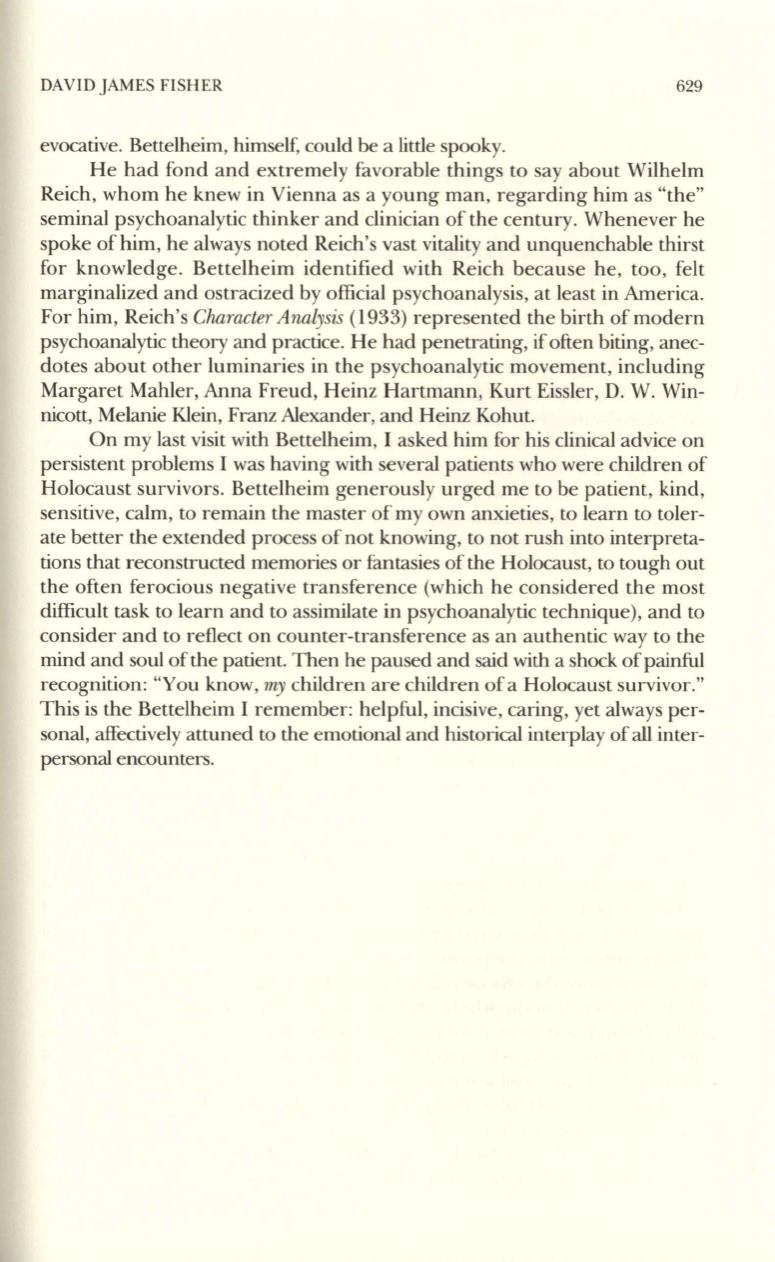
DAVID JAMES FISHER
629
evocative. Bettelheim, himself, could be a little spooky.
He had fond and extremely favorable things to say about Wilhelm
Reich, whom he knew in Vienna as a young man, regarding him as "the"
seminal psychoanalytic thinker and clinician of the century. Whenever he
spoke of him, he always noted Reich's vast vitality and unquenchable thirst
for knowledge. Bettelheim identified with Reich because he, too, felt
marginalized and ostracized by official psychoanalysis, at least in America.
For him, Reich's
Character Analysis
(1933) represented the birth of modern
psychoanalytic theory and practice. He had penetrating,
if
often biting, anec–
dotes about other luminaries in the psychoanalytic movement, including
Margaret Mahler, Anna Freud, Heinz Hartmann, Kurt Eissler, D. W. Win–
nicott, Melanie Klein, Franz Alexander, and Heinz Kohut.
On my last visit with Bettelheim, I asked him for his clinical advice on
persistent problems I was having with several patients who were children of
Holocaust survivors. Bettelheim generously urged me to be patient, kind,
sensitive, calm, to remain the master of my own anxieties, to learn to toler–
ate better the extended process of not knowing, to not rush into interpreta–
tions that reconstructed memories or fantasies of the Holocaust, to tough out
the often ferocious negative transference (which he considered the most
difficult task to learn and to assimilate in psychoanalytic technique), and to
consider and to reflect on counter-transference as an authentic way to the
mind and soul of the patient. Then he paused and said with a shock of painful
recognition: "You know,
my
children are children ofa Holocaust survivor."
This is the Bettelheim I remember: helpful, incisive, caring, yet always per–
sonal, affectively attuned to the emotional and historical interplay of all inter–
personal encounters.


